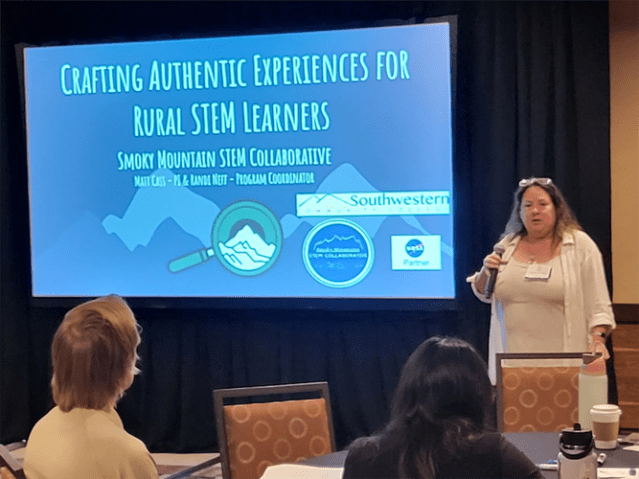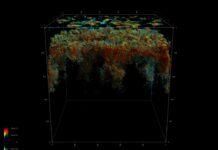—
NASA’s Science Activation (SciAct) teams recently took part in the National Rural STEM Summit, which was held from June 4-7, 2024, in Tucson, Arizona. This event was hosted by Kalman Mannis, a key figure from the Rural Activation and Innovation Network at the Arizona Science Center, in collaboration with the SciTech Institute. The primary aim of the summit was to encourage collaboration and knowledge exchange among various organizations committed to fostering authentic STEM (Science, Technology, Engineering, and Mathematics) education in rural communities.
The National Rural STEM Summit serves as a vital platform for educators, policymakers, and organizations to come together and address the unique challenges faced by rural areas in accessing quality STEM education. Rural communities often lack the resources and infrastructure available in urban settings, which can make it difficult for students to participate in STEM learning opportunities. This summit aimed to bridge that gap by promoting partnerships and creating pathways for meaningful STEM engagement.
The Role of NASA’s SciAct Teams
NASA’s Science Activation (SciAct) program plays a crucial role in making science accessible to people of all ages and backgrounds. By participating in the summit, NASA’s SciAct teams showcased their commitment to enhancing STEM education in underserved communities. Their involvement included sharing resources, presenting educational programs, and demonstrating innovative teaching methods designed to engage students in rural areas.
One of the key highlights of NASA’s participation was the introduction of interactive learning tools and activities that make complex scientific concepts more understandable and exciting for students. These tools include virtual reality experiences, hands-on experiments, and educational games that are designed to spark curiosity and foster a love for science.
Addressing Challenges in Rural STEM Education
Rural communities face several challenges when it comes to STEM education. These include limited access to high-quality educational materials, a shortage of trained STEM teachers, and a lack of extracurricular STEM programs. The National Rural STEM Summit addressed these issues by bringing together experts and stakeholders to discuss strategies for overcoming these barriers.
One effective approach discussed at the summit was the use of technology to bridge the gap between rural and urban education. For example, online learning platforms and virtual classrooms can provide students in remote areas with access to the same high-quality STEM education as their urban counterparts. Additionally, partnerships with organizations like NASA can bring unique educational opportunities to rural schools, such as live-streamed experiments and virtual field trips to NASA facilities.
Building Partnerships for Sustainable Impact
A significant focus of the summit was on building sustainable partnerships between schools, community organizations, and industry leaders. These partnerships are essential for creating lasting change and ensuring that rural students have ongoing access to STEM education and career opportunities.
One successful example of such a partnership is the collaboration between NASA and local schools through the SciAct program. By working together, they have been able to develop tailored educational programs that meet the specific needs of rural students. These programs not only provide students with valuable STEM skills but also inspire them to pursue careers in science and technology.
The Importance of Authentic STEM Learning
Authentic STEM learning involves hands-on, real-world experiences that allow students to apply what they have learned in the classroom to solve real problems. This type of learning is particularly important in rural communities, where students may not have as many opportunities to engage with STEM outside of school.
At the summit, educators and experts shared best practices for creating authentic STEM learning experiences. These included project-based learning, where students work on long-term projects that require them to research, design, and implement solutions to real-world problems. For example, students might work on a project to develop sustainable energy solutions for their community or create a plan to protect local wildlife habitats.
Good to Know Information
For those interested in learning more about the efforts to enhance STEM education in rural areas, the National Rural STEM Summit is an excellent resource. The event’s website, National Rural STEM Summit, provides information on past and upcoming summits, as well as resources and materials from previous events.
Additionally, NASA’s SciAct program offers a wealth of resources for educators and students. Their website features lesson plans, interactive tools, and information on upcoming events and programs. By exploring these resources, educators can find new ways to engage their students in STEM learning and inspire the next generation of scientists and engineers.
Reactions and Reviews
The response to the National Rural STEM Summit has been overwhelmingly positive. Participants praised the event for its focus on practical solutions and its commitment to fostering collaboration among diverse stakeholders. Many attendees noted that the summit provided valuable insights and resources that they could take back to their communities and implement in their own schools and organizations.
Educators, in particular, appreciated the opportunity to connect with peers and experts from across the country. They shared that the summit helped them feel more supported and empowered to make a difference in their students’ lives. The hands-on workshops and interactive sessions were highlighted as especially beneficial, providing participants with practical tools and strategies that they could use immediately.
Conclusion
The National Rural STEM Summit, with the active participation of NASA’s SciAct teams, represents a significant step forward in addressing the unique challenges faced by rural communities in accessing quality STEM education. By fostering collaboration, sharing resources, and promoting authentic learning experiences, the summit aims to create lasting change and inspire the next generation of STEM leaders.
As we look to the future, it is clear that continued efforts and partnerships will be essential in ensuring that all students, regardless of where they live, have the opportunity to engage with and excel in STEM. The work being done by NASA’s SciAct program and other organizations involved in the summit is a testament to the power of collaboration and innovation in creating a brighter future for all.
For more information on upcoming events and resources, be sure to visit the National Rural STEM Summit website and explore the wealth of materials available through NASA’s SciAct program.

































